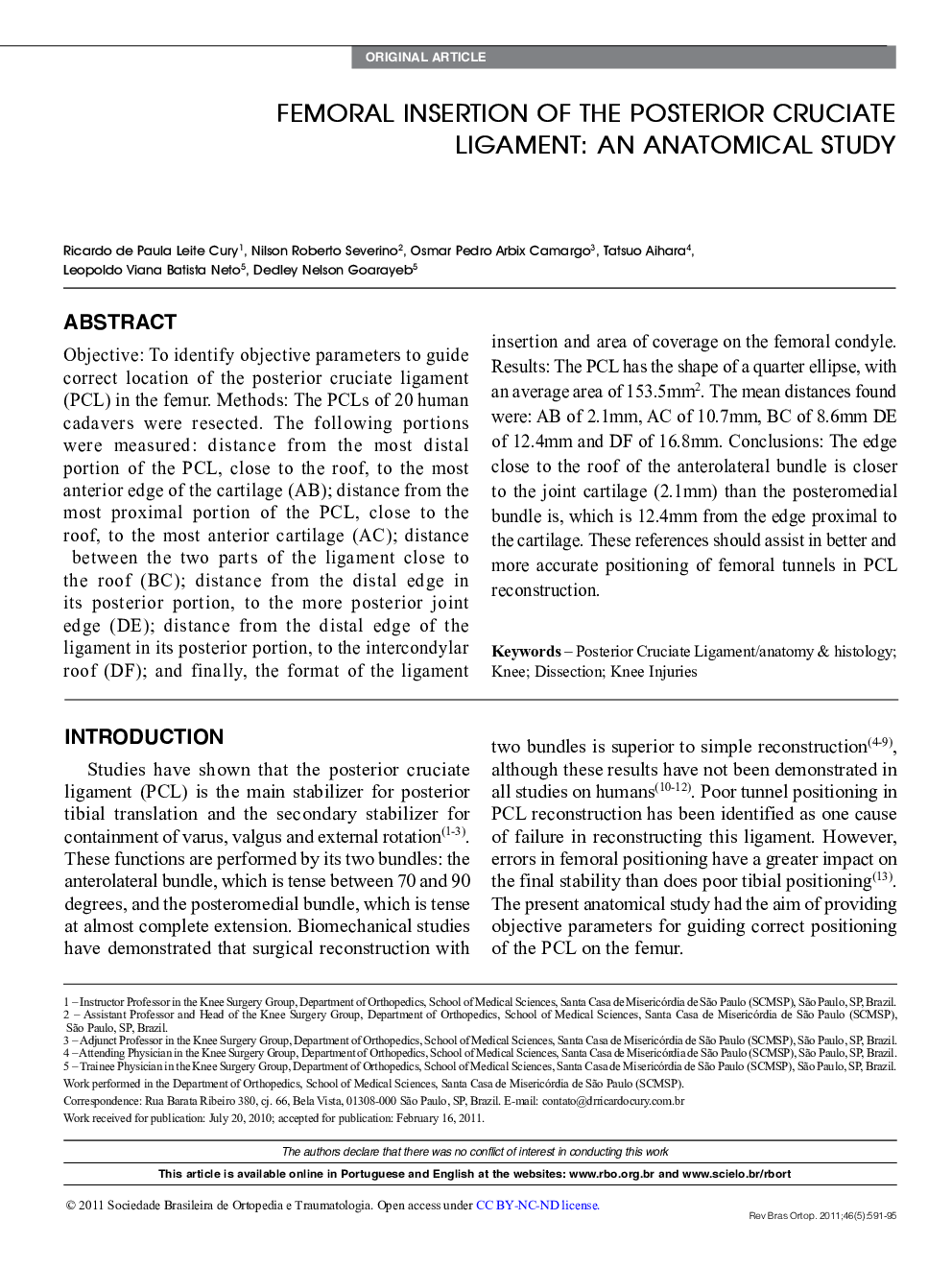| Article ID | Journal | Published Year | Pages | File Type |
|---|---|---|---|---|
| 2718460 | Revista Brasileira de Ortopedia (English Edition) | 2011 | 5 Pages |
ABSTRACTObjective: To identify objective parameters to guide correct location of the posterior cruciate ligament (PCL) in the femur. Methods: The PCLs of 20 human cadavers were resected. The following portions were measured: distance from the most distal portion of the PCL, close to the roof, to the most anterior edge of the cartilage (AB); distance from the most proximal portion of the PCL, close to the roof, to the most anterior cartilage (AC); distance between the two parts of the ligament close to the roof (BC); distance from the distal edge in its posterior portion, to the more posterior joint edge (DE); distance from the distal edge of the ligament in its posterior portion, to the intercondylar roof (DF); and finally, the format of the ligament insertion and area of coverage on the femoral condyle. Results: The PCL has the shape of a quarter ellipse, with an average area of 153.5mm2. The mean distances found were: AB of 2.1mm, AC of 10.7mm, BC of 8.6mm DE of 12.4mm and DF of 16.8mm. Conclusions: The edge close to the roof of the anterolateral bundle is closer to the joint cartilage (2.1mm) than the posteromedial bundle is, which is 12.4mm from the edge proximal to the cartilage. These references should assist in better and more accurate positioning of femoral tunnels in PCL reconstruction.
